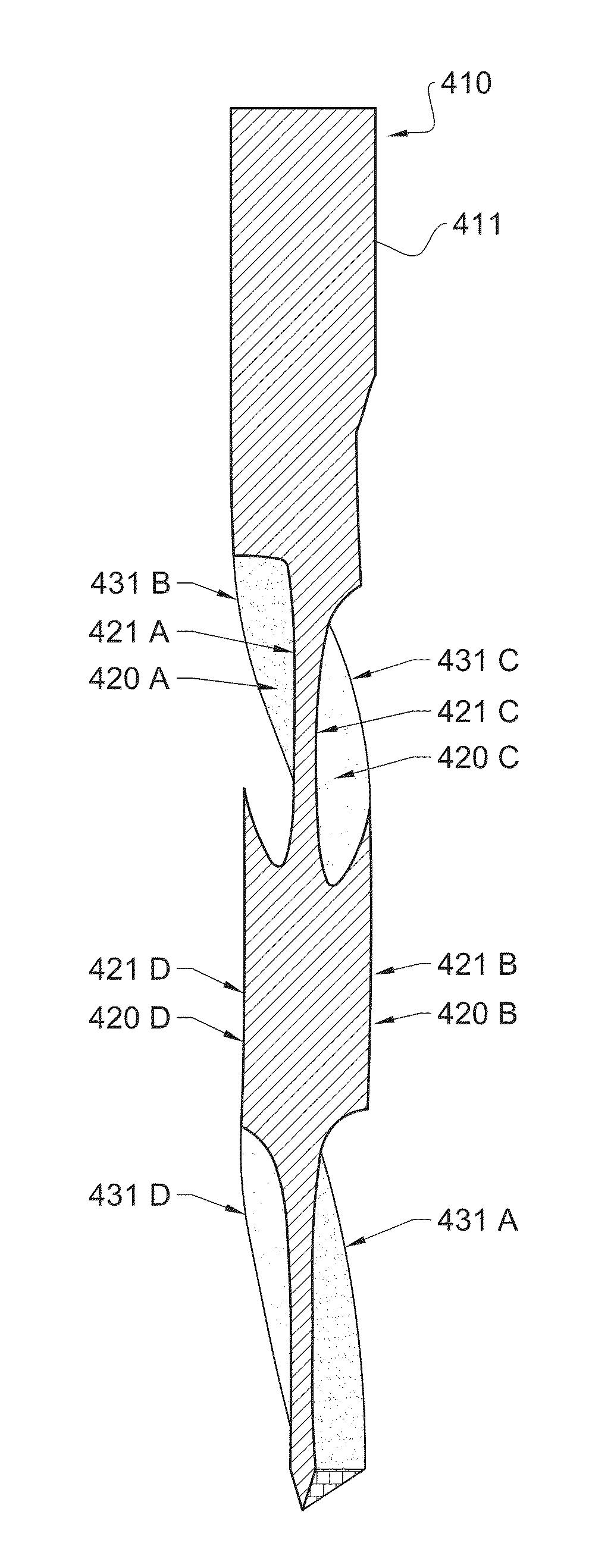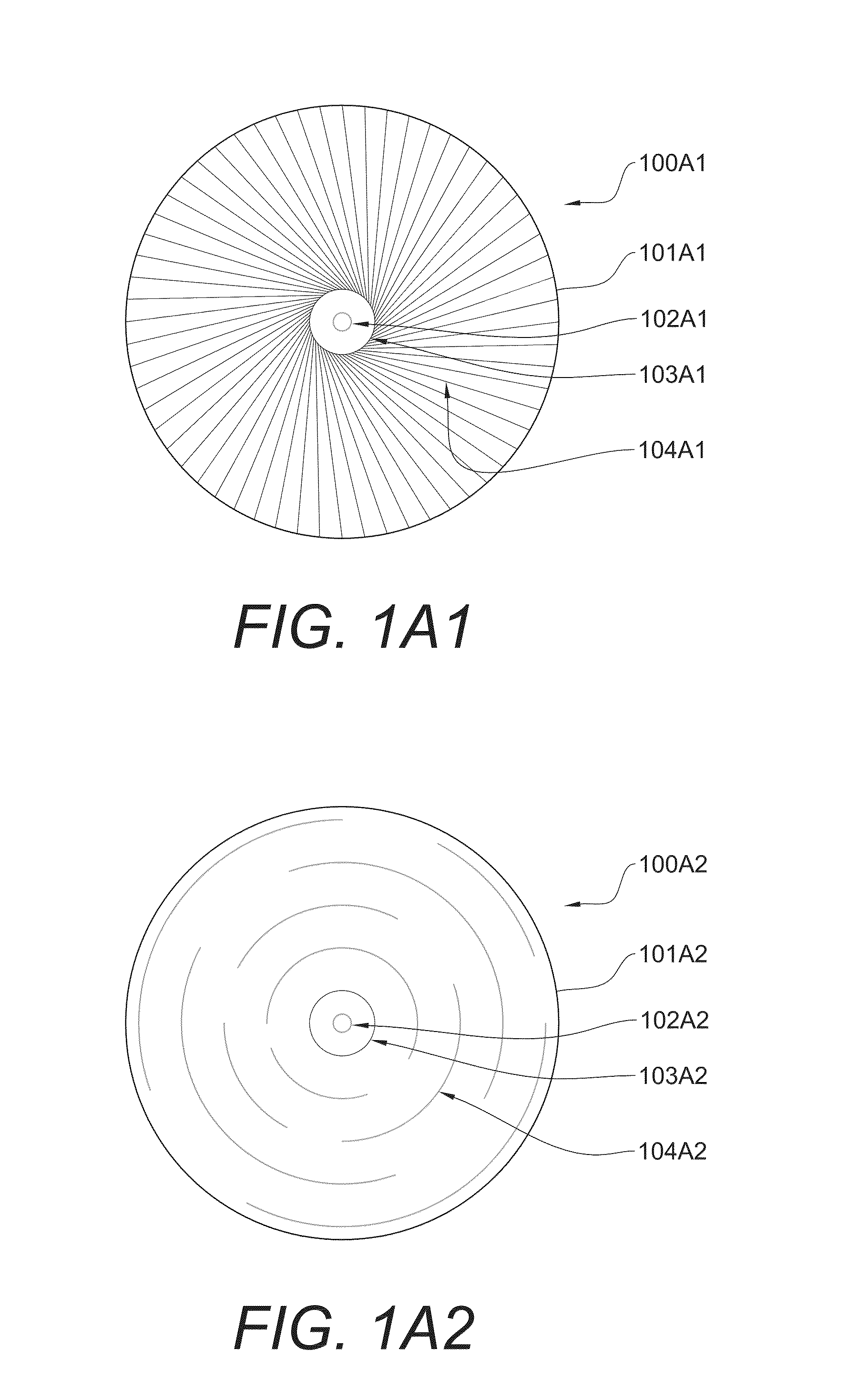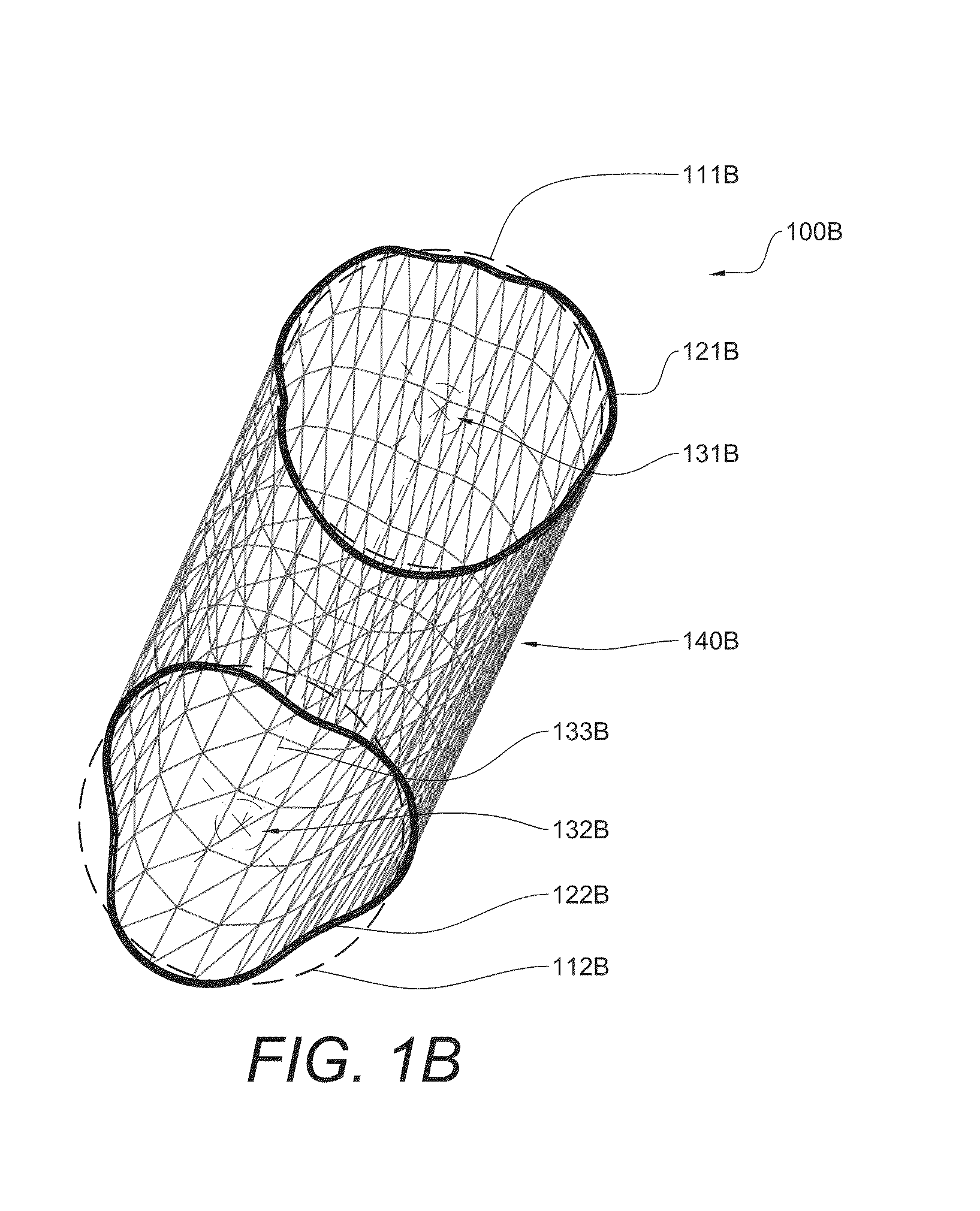Precessional Drilling and Reaming
a technology of precessional drilling and reaming, which is applied in the direction of twist drills, wood boring tools, turning machine accessories, etc., can solve the problems of increasing friction and axial resistance, affecting the accuracy of drilling and/or workpieces, so as to achieve the effect of monotony reduction
- Summary
- Abstract
- Description
- Claims
- Application Information
AI Technical Summary
Benefits of technology
Problems solved by technology
Method used
Image
Examples
Embodiment Construction
[0078]This document provides rotary precessional-motion cutting devices that may be used for industrial drilling and / or reaming. The drilling instruments provided herein have at least some transverse cross-sections (perpendicular to the axis of rotation) with centers of mass that are offset from the drill's axis of rotation. The offset center of mass may allow the drills to generate precessional motion (also referred to herein as mechanical waves) when in use, whereby not all portions of the cutting edges are in simultaneous contact with the substrate material being cut. In some embodiments, the cutting tool designs and methods provided herein may mitigate or eliminate chatter and provide symmetrically round holes. The cutting devices provided herein may be lighter and require less axial pressure or down force and less energy to operate than other cutting devices. An example use for the cutting devices provided herein is drilling and / or reaming of round holes in materials such as wo...
PUM
| Property | Measurement | Unit |
|---|---|---|
| angle | aaaaa | aaaaa |
| rake angle | aaaaa | aaaaa |
| mass | aaaaa | aaaaa |
Abstract
Description
Claims
Application Information
 Login to View More
Login to View More - R&D
- Intellectual Property
- Life Sciences
- Materials
- Tech Scout
- Unparalleled Data Quality
- Higher Quality Content
- 60% Fewer Hallucinations
Browse by: Latest US Patents, China's latest patents, Technical Efficacy Thesaurus, Application Domain, Technology Topic, Popular Technical Reports.
© 2025 PatSnap. All rights reserved.Legal|Privacy policy|Modern Slavery Act Transparency Statement|Sitemap|About US| Contact US: help@patsnap.com



